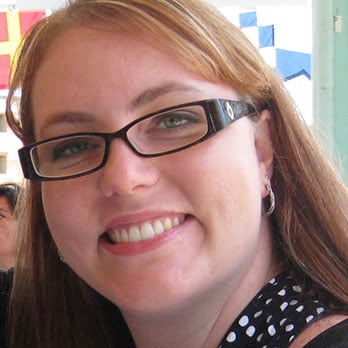
"Making a mistake isn’t a problem, it’s a learning opportunity."
-- Tom Kaczmarek, Mathematics Curriculum Leader, Worthington City Schools
When Tom Kaczmarek started as the Math Curriculum Leader for Worthington City Schools, he inherited a penguin named JiJi. A previous district administrator had written a grant for ST Math, which features JiJi, and Kaczmarek was skeptical at best. At first, he didn’t do much with the program, but he couldn’t escape the excitement of the district’s veteran teachers.
Anxious to learn what the big deal about JiJi was, he took his district's Chief Academic Officer and EL Curriculum Leader to hear Matthew Peterson speak. Peterson is the Co-founder, Chief Executive Officer and Senior Scientist at MIND Research Institute, and the creator of ST Math. “Within about 10 minutes, we all looked at each other and were like ‘whoa.’ He was fascinating, humble and had wonderful thoughts on the process of learning.”
Kaczmarek went home that night and immediately jumped on the program. “I started to play it again, and at about the 3rd module, I felt this change in my brain. For the first time I am seeing this conceptually and not relying on process.” He watched his 9 year old daughter pick it up quicker than he had. He then took the program to one of his Title 1 school’s teachers, who is charismatic and tends to build excitement around math programing. He showed her the program really quickly and gave her the weekend to play around with it. By Friday night at about 10pm he received a text: “This is it, this is what we are using.”
Monday ST Math fun in room 27! Working on finding the area @JiJiMath @WoParkSharks #ItsWorthIt pic.twitter.com/7II9MZunjr
— Angela Lanza (@MissLanza27) November 16, 2015
So what was it about the program that won over the Worthington City Schools math staff? It was all about the challenge. It was about de-emphasizing process and protocol and focusing in on a deeper understanding of mathematical concepts. Math classrooms are exciting. They are places where students actively wrestle with problems; where meaningful conversation takes place around ideas, not just solutions. They are environments where teachers have a new take on productive failure and growth mindset and where students collaborate and persist through tough challenges.
Kaczmarek loves visiting classrooms, “I think one of the best things that I see is when the anxiety level of a student is way down. It’s the way that the teacher presents themselves and the material so that a kid doesn't feel bad stepping out. Making a mistake isn’t a problem, it’s a learning opportunity. I love seeing struggling students participating, it isn’t a judgement about who they are or what they can become, they are all involved in the process.”
ST Math in Worthington City Schools began as a grassroots adoption. There had been numerous different resources being used among math teachers in the district. Some purchased at the district level and at least half a dozen others being used at the individual teacher level. ST Math was never mandated in the beginning, but it clearly caught on. By the end of the first year, there were about 5,000 students regularly using the program —- that’s about 80% of Worthington’s elementary students.
Now, ST Math is used as a tier 1 resource for elementary. The expectation is that every K-6 student is using it regularly (about 3 times a week). For the middle school students, it is utilized as a tier 2 or 3 resource and the program even shows up at the high school level, where teachers are using the games to introduce complex ideas and build greater conceptual understanding.
What do the kids say about ST Math? “It challenges them and they like that.” For any math enthusiast that statement is powerful. Kids at Worthington City Schools are taking on — and better yet — enjoying mathematical challenges.
More from Worthington City Schools:

Abby Daniels was Director of Communications at MIND Research Institute, where she worked for over 10 years as the organization transformed from a small, local nonprofit to a national leader in education.
Comment